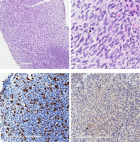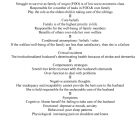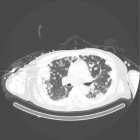About Higher Institute of Medical Techniques
Higher Institute of Medical Techniques
Articles by Higher Institute of Medical Techniques
Maternal and perinatal outcomes of uterine rupture in Lubumbashi, Democratic Republic of Congo
Published on: 20th October, 2020
OCLC Number/Unique Identifier: 8691249258
Introduction: Uterine rupture is one of the peripartum complications, which cause nearly about one out of thirteen maternal deaths. This study aimed to assess the prevalence and associated factors of mortality among women with uterine rupture in referral hospitals of Lubumbashi, in the south east part of the Democratic Republic of Congo.
Methods: Institution based cross sectional study was conducted from December 1st, 2012 to 31st, 2016 on uterine rupture. During the study selected 158 women were included by using exhaustive sampling method. Data were checked, coded and analyzed into STATA version 12. Chi-square test was used to identify the predictors of maternal and perinatal mortalities in women with uterine rupture and 95% Confidence Interval of odds ratio at p - value less than 0.05 was taken as a significance level.
Results: The overall prevalence of uterine rupture was 0.49%. The average age of the patients was 29.5 ± 6.2 years and 71.52% of them were between 20 and 34 years old; more than 60% had a parity ≥4 (average parity: 4.7 ± 2.5). 81.17% of the cases had a fully ruptured uterus and 51.17% of the uterine ruptures were located in the lower segment. Repair of the pregnant ruptured uterus was performed in 93.04% of the cases and hysterectomy in 5.06%. Maternal and perinatal mortalities were 8.86% and 72.04% respectively. Regarding maternal mortality, no parameter showed a significant association with maternal death. As for perinatal mortality, parity ≥4, complete rupture and segmento-corporeal lesion were significantly associated with perinatal death (p < 0.05).
Conclusion: Uterine rupture remains one of the causes of maternal and perinatal mortality in Lubumbashi. The place occupied by uterine ruptures in obstetric activity requires joint and urgent action by all stakeholders in the health system in order to combat this scourge, witness to poor quality obstetric care.
Atherogenic risk assessment of naive HIV-infected patients attending Infectious Diseases Service of Kinshasa University Teaching Hospital, Democratic Republic of the Congo (DRC)
Published on: 13th October, 2020
OCLC Number/Unique Identifier: 8689021635
Background and aim: Metabolic abnormalities are common in HIV/AIDS. Increasingly, lipid ratios are used as screening tools for dyslipidaemia in these medical conditions. The aim of this study was to assess the ability of 4 lipid ratios to predict cardiovascular risks.
Methods: This is a cross-sectional and analytical study included 105 HIV+ patients followed in Kinshasa University Teaching Hospital (KUTH). Four indices [Atherogenic Index of Plasma (AIP), Castelli Risk Index (CRI) I and II, Atherogenic coefficient (AC)] were compared. Statistical analyzis consisted of measuring frequencies and means, Student’s t-tests, ANOVA and Ficher’s exact test, and the calculation of the Kappa value.
Results: Lipid ratios predicted respectively the risk in 62% (AIP), 28.6% (CRI-I) and 23.8% (CRI-II). CRI-I and II were elevated, especially in women. The AIP appeared to be a better predictor than CRI-I and II to assess dyslipidaemia in general and the high-risk frequency. The cholesterol detected risk in 66.7% (Low HDL-C), 50% (High LDL-C), 38.9% (High TC and/or TG).
The atherogenic risk was higher with age, advanced WHO stage, HIV-TB, HBV-HCV co-infections, smoking and alcohol intake. Haemoglobin (Hb) and CD4 counts were low when the risk was high. Age ≥ 50 years, stage 4 (WHO), CD4s+ ≤ 200 cells/µL were independent factors associated with atherogenic risk.
Conclusion: Lipid ratios can be used as reliable tools for assessing cardiovascular risk of naïve HIV-infected patients who received HAART.
Lipid profile of antiretroviral therapy-naive HIV-infected patients attending infectious diseases service of University Teaching Hospital of Kinshasa, Democratic Republic of the Congo (DRC)
Published on: 26th August, 2020
OCLC Number/Unique Identifier: 8683051917
Introduction: HIV infection leads to metabolic disorders. The objective of this work was to study the lipid profile of HIV + patients followed at the University Teaching Hospital of Kinshasa (UTHK).
Methods: This study analyzes the lipid profile of HIV + patients, aged at least 18 years, followed at the UTHK from January 1, 2008 to December 31, 2014. The medians of different types of lipids, the frequency of lipid disorders, the general clinical characteristics of patients and factors associated with dyslipidaemia were studied. Haemoglobin (Hb), White Blood Cells (WBC), Leukocyte Formula (LF), Blood Sugar, Urea, Creatinine, Transaminases, Uric Acid, CD4s+ count were analyzed.
Results: The lipid balance was performed in 38.8% of patients; 38.1% of them had dyslipidaemia. Total hypercholesterolaemia (28.6%), elevated LDL-C (19%), hypertriglyceridemia (23.8%) and HDL hypocholesterolaemia (42.9%) were observed. The medians of TG (128 mg / dL), HDL-C (51 mg/dL) and LDL-C (78 mg/dL) were high. Risk factors associated with dyslipidaemia were represented by WHO stage 4, tuberculosis (TB) and hyperglycaemia. The highest levels of LDL-C and TG and the lowest HDL-C were seen when CD4s+ were below 200 elements/µL.
Conclusion: The HIV/AIDS dyslipidaemia characterized in this study by HDL-C hypocholesterolaemia, hypertriglyceridemia and total and LDL hypercholesterolemia can be considered as an indicator of the progression of HIV infection.
Clinical and biological profiles of older adults aged 50 and over compared to those under 50 in people living with HIV attending Kinshasa University Teaching Hospital (DR Congo)
Published on: 28th October, 2021
OCLC Number/Unique Identifier: 9322406717
Background: The survival of people living with HIV (PLWHIVs) is increased and Health systems will have to deal with the early-aging-associated medical conditions.Objective: The objective of this study is to compare the clinical and biological profiles of PLWHIVs aged 50 and over and those aged less than 50 years.Material and methods: This study conducted at Kinshasa University Teaching Hospital (KUTH) covers 6 years. The clinical and biological characteristics of PLWHIVs aged 50 and over were compared with those under 50. Statistical analysis used the means ± SD, the calculation of frequencies, Student’s t-test and Chi-square.Results: PLWHIVs aged 50 or over represented 35.1%. Their average age was 58.0 ± 4.8 years. Women predominate among those under 50 and men among those 50 and over. Married people were more numerous (54% among those under 50). There were more unemployed (50% of PLHIV under 50). Patients 50 years and older were significantly classified as WHO stage 4 with a high frequency of history of tuberculosis, genital herpes, high blood pressure, smoking, vomiting, hepatomegaly, moderate elevation of diastolic blood pressure (DBP) and sytolic blood pressure (SBP), tuberculosis and anemia.Those under 50 had a significantly increased frequency of shingles, hepatitis B-hepatitis C, headaches and more survivals. The mean of Hb, HDL-C, and CD4s+ were significantly lower in patients 50 years and older, and urea, LDL-c, and ALAT levels were significantly higher. Conclusion: The average age was higher from 50 years old. These PLWHIVs were more frequently in WHO stage 4 with more common TB and anemia. Their Hb, HDL-C, and CD4s+ levels were lower while their urea, LDL-C and ALAT levels were significantly elevated.

If you are already a member of our network and need to keep track of any developments regarding a question you have already submitted, click "take me to my Query."




















































































































































